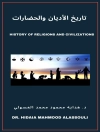Summa Theologica Part III (Tertia Pars) Thomas Aquinas – The Summa Theologiae (Latin: Compendium of Theology or Theological Compendium; also subsequently called the Summa Theologica or simply the Summa, written 1265-1274) is the best-known work of Thomas Aquinas (c.1225-1274), and although unfinished, ‘one of the classics of the history of philosophy and one of the most influential works of Western literature.’ It is intended as a manual for beginners in theology and a compendium of all of the main theological teachings of the Church. It presents the reasoning for almost all points of Christian theology in the West. The Summa’s topics follow a cycle: the existence of God; Creation, Man; Man’s purpose; Christ; the Sacraments; and back to God. (courtesy of wikipedia.com).This is part 3, ‘Tertia Pars’.The way which leads to God is Christ, the theme of part III. It can be asserted that the incarnation was absolutely necessary. The Unio between the Logos and the human nature is a ‘relation’ between the divine and the human nature which comes about by both natures being brought together in the one person of the Logos. An incarnation can be spoken of only in the sense that the human nature began to be in the eternal hypostasis of the divine nature. So Christ is unum since his human nature lacks the hypostasis. The person of the Logos, accordingly, has assumed the impersonal human nature, and in such way that the assumption of the soul became the means for the assumption of the body. This union with the human soul is the gratia unionis which leads to the impartation of the gratia habitualis from the Logos to the human nature. Thereby all human potentialities are made perfect in Jesus. Besides the perfections given by the vision of God, which Jesus enjoyed from the beginning, he receives all others by the gratia habitualis.
Sobre el autor
Thomas Aquinas (sometimes styled Thomas of Aquin or Aquino), was a Dominican friar and priest notable as a scholastic theologian and philosopher. He is honored as a saint and ‘Doctor of the Church’ in the Roman Catholic tradition.Aquinas lived at a critical juncture of western culture when the arrival of the Aristotelian corpus in Latin translation reopened the question of the relation between faith and reason, calling into question the modus vivendi that had obtained for centuries. This crisis flared up just as universities were being founded. Thomas, after early studies at Montecassino, moved on to the University of Naples, where he met members of the new Dominican Order. It was at Naples too that Thomas had his first extended contact with the new learning. When he joined the Dominican Order he went north to study with Albertus Magnus, author of a paraphrase of the Aristotelian corpus. Thomas completed his studies at the University of Paris, which had been formed out of the monastic schools on the Left Bank and the cathedral school at Notre Dame. In two stints as a regent master Thomas defended the mendicant orders and, of greater historical importance, countered both the Averroistic interpretations of Aristotle and the Franciscan tendency to reject Greek philosophy. The result was a new modus vivendi between faith and philosophy which survived until the rise of the new physics. The Catholic Church has over the centuries regularly and consistently reaffirmed the central importance of Thomas’s work for understanding its teachings concerning the Christian revelation, and his close textual commentaries on Aristotle represent a cultural resource which is now receiving increased recognition.




